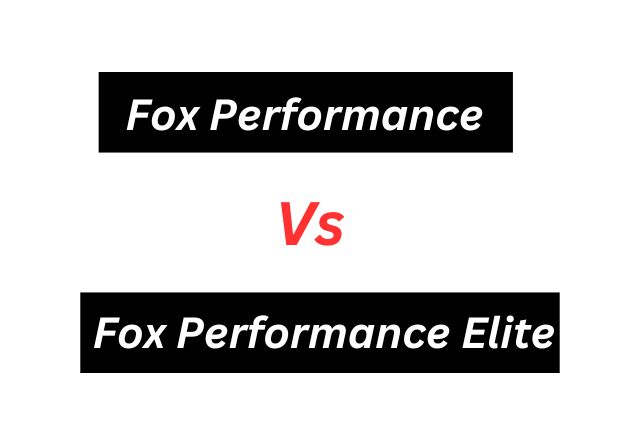
If you are looking for a high-quality suspension fork for your mountain bike, you might have come across the Fox Performance and Performance Elite series. These two series are very similar in many aspects, but they also have some key differences that might affect your decision.
Features
Both the Fox Performance and Performance Elite forks share the same chassis, air spring, and damper technologies. They are both available in 32, 34, 36, and 38 mm stanchion diameters, and they can accommodate various wheel sizes and travel options. They also have the same adjustments for air pressure, rebound, and compression.
Coating
The main difference between the two series is the coating on the stanchions. The Fox Performance forks have a black anodized coating, while the Fox Performance Elite forks have a Kashima coating. The Kashima coating is a gold-colored hard anodized coating that reduces friction and improves durability. The Kashima coating also gives the forks a more premium look and feel.
Related: Marzocchi Bomber Z2 vs. Fox 34: Which One Is Better?
Specifications
The specifications of the Fox Performance and Performance Elite forks depend on the model, wheel size, and travel option you choose. However, here are some general specifications for comparison:
Weight
The Fox Performance forks are slightly heavier than the Performance Elite forks, due to the difference in coating. For example, the 34 Performance fork with 140 mm of travel weighs 1.87 kg, while the 34 Performance Elite fork with the same travel weighs 1.83 kg.
Offset
The offset is the distance between the center of the axle and the center of the steerer tube. The offset affects the steering geometry and handling of the bike.
The Fox Performance and Performance Elite forks have different offset options depending on the wheel size. For 26-inch wheels, the offset is 37 mm; for 27.5-inch wheels, the offset is either 37 or 44 mm; for 29-inch wheels, the offset is either 44 or 51 mm.
Axle
The axle is the part that connects the fork to the front wheel. The Fox Performance and Performance Elite forks have two axle options: QR15x100 mm or QR15x110 mm (Boost). The Boost axle is wider and provides more stiffness and clearance for larger tires.
Rake
The rake is the distance between the center of the axle and a line perpendicular to the steerer tube. The rake affects the trail, which is the distance between the contact point of the front tire and a line perpendicular to the head tube angle. The trail affects the stability and maneuverability of the bike. The
Fox Performance and Performance Elite forks have different rake options depending on the model and wheel size. For example, the 32 forks have a rake of either 44 or 51 mm; the 34 forks have a rake of either 44 or 51 mm; the 36 forks have a rake of either 37 or 44 mm; and the 38 forks have a rake of either 37 or 44 mm.
Related: Fox 49 vs. 40: Compared
Price
The price of the Fox Performance and Performance Elite forks varies depending on the model, wheel size, travel option, and retailer. However, in general, the Performance Elite forks are more expensive than the Performance forks, due to the Kashima coating. For example, on Jenson USA, one of the largest online bike retailers in North America, a 34 Performance fork with 140 mm of travel costs $749 USD, while a 34 Performance Elite fork with the same travel costs $959 USD.
Performance
The performance of the Fox Performance and Performance Elite forks depends largely on your personal preference and riding style.
However, some general observations can be made based on user reviews and feedback:
Kashima coating
The Kashima coating on the Performance Elite forks makes them smoother and more responsive than the Performance forks. The reduced friction also helps them maintain their performance in harsh conditions and over long periods of use.
Forks
The Performance Elite forks are more suitable for aggressive riders who demand more from their suspension. They offer more control and confidence on rough terrain and technical features.
The Performance forks are more suitable for casual riders who want a reliable and comfortable suspension. They offer enough performance for most trails and riding situations.
The difference between the two series is not very noticeable for beginners or intermediate riders who are not pushing their limits or riding very fast.
Conclusion
The Fox Performance and Performance Elite forks are both excellent choices for mountain bike suspension. They offer similar features and technologies, but differ in their coating, weight, price, and performance. The choice between them depends on your budget, preference, and riding style.
If you want a smoother, more responsive, and more durable fork that can handle more abuse, you might want to go for the Performance Elite series.
If you want a reliable, comfortable, and more affordable fork that can handle most trails and riding situations, you might want to go for the Performance series.
Either way, you will not be disappointed with the quality and performance of Fox suspension forks.
